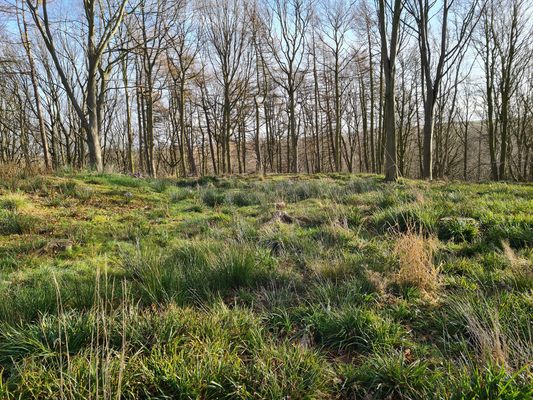About
All that remains of Foss Castle is a prominent hill which was once part of a motte and bailey castle. The motte is a circular, man-made mound and the bailey would be the attached enclosures. Although now surrounded by woodland, when the castle was originally built in the 1070s, it would have been situated in a more open landscape.
It is thought that the earthworks developed over several phases, the area had long-standing Anglo-Saxon links and the nearby church has "hogback" grave markers dating to the the 8th-10th centuries.
The castle was built shortly after the Norman Conquest, by Nigel Fossard, a landowner with extensive estates and several other castles throughout Yorkshire. After Fossard died in 1091, the castle passed through several generations of the family. Little is known about the castle at this time, but there are records in 1133 of "Castrum de Mulgreit" (Castle of Mulgrave) and this before the construction of Old Mulgrave Castle, which took place later further towards the coast.
The main mound, or motte, was over 50 meters in diameter and stood five meters tall, surrounded by a deep moat. The structures would have originally been constructed with wood, but possibly replaced with stone buildings later. The flattened top of the motte has a smaller circular raised area to the northeast side which is thought to be the location of a tower.
There were two baileys, one is a large horseshoe-shaped platform to the southeast of the motte, and a smaller enclosure to the northwest with a triangular shape. These enclosures would have been topped by tall palisades.
To the south side is the deep gorge of Sandsend Beck, which meant that no defenses would have been needed there.
It is thought that there was once an even earlier Anglo-Saxon settlement to the north of the mound.
Related Tags
Community Contributors
Added By
Published
October 13, 2023




























